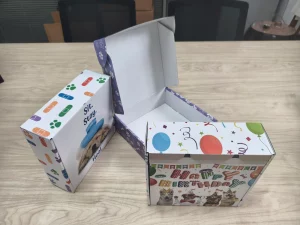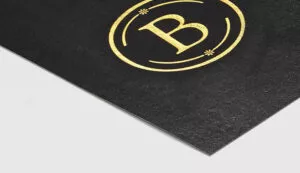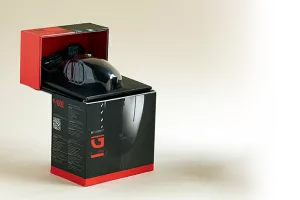Transition to Sustainable Packaging: Embracing Eco-Friendly Solutions for a Better Future
The shift towards sustainable packaging is more important than ever. As businesses and consumers become increasingly aware of environmental issues, the demand for eco-friendly packaging solutions grows. This article explores the importance of transitioning to sustainable packaging, the benefits it brings, and how you can implement it in your business. Dive in to discover how embracing sustainability can make a positive impact on both the planet and your brand.
Table of Contents
What Is Sustainable Packaging and Why Is It Important?
Sustainable packaging refers to the use of packaging materials and designs that have minimal environmental impact. It’s about creating packaging solutions that are not only functional but also support long-term environmental health.
Key Reasons for Importance:
- Environmental Impact Reduction: Sustainable packaging helps reduce waste and pollution.
- Consumer Demand: There’s a growing preference for brands that prioritize sustainability.
- Regulatory Compliance: Many regions are implementing stricter packaging regulations.
By transitioning to eco-friendly packaging, businesses can meet consumer expectations and contribute to a healthier planet.
How Does Sustainable Packaging Contribute to Environmental Impact Reduction?
The use of sustainable packaging materials significantly lowers the environmental impact of products.
Ways Sustainable Packaging Helps:
- Reduced Waste: Using biodegradable or recyclable materials minimizes landfill accumulation.
- Resource Conservation: Eco-friendly options often use less energy and water in production.
- Pollution Prevention: Less reliance on harmful chemicals reduces soil and water contamination.
For instance, adopting recycled paper packaging can significantly reduce deforestation and conserve natural resources.
What Are the Types of Sustainable Packaging Materials?
Choosing the right packaging material is crucial for sustainability.
Common Sustainable Materials:
- Recycled Paper and Cardboard: Ideal for paper packaging like boxes and bags.
- Corrugated Packaging: Strong yet recyclable, perfect for protective packaging.
- Biodegradable Plastics: Made from plant-based materials that decompose naturally.
- Compostable Materials: Break down into non-toxic components in composting conditions.
By selecting appropriate materials, businesses can create sustainable packaging solutions that meet their needs.
How Can Businesses Transition to Eco-Friendly Packaging Solutions?
Transitioning to sustainable packaging involves careful planning and execution.
Steps for Transition:
- Assess Current Packaging: Identify areas where improvements can be made.
- Research Sustainable Options: Explore materials that suit your products.
- Partner with Suppliers: Work with providers who offer eco-friendly packaging materials.
- Implement Gradually: Transition in phases to manage costs and logistics.
- Educate Stakeholders: Inform employees and customers about the changes and benefits.
Adopting sustainable practices not only reduces packaging costs in the long run but also enhances brand image.

What Are the Advantages of Sustainable Packaging?
There are numerous benefits to embracing sustainable packaging.
Key Advantages:
- Environmental Benefits: Reduced waste and lower carbon footprint.
- Economic Savings: Potentially lower material and disposal costs.
- Consumer Appeal: Meets the expectations of eco-conscious customers.
- Regulatory Compliance: Aligns with environmental laws and standards.
- Brand Differentiation: Sets your brand apart as a leader in sustainability.
Implementing sustainable packaging strategies can improve your business’s overall performance.
How to Implement Sustainable Packaging Strategies in Your Business
Creating effective sustainable packaging strategies requires a systematic approach.
Strategy Development:
- Set Clear Goals: Define what you want to achieve with sustainable packaging.
- Involve the Team: Engage different departments for a holistic approach.
- Monitor and Adjust: Track the impact of changes and refine as needed.
- Communicate with Customers: Highlight your commitment to sustainability in marketing efforts.
Businesses like Customized Packaging Boxes offer tailored solutions to help you transition smoothly.
Success Stories: Companies Adopting Sustainable Packaging
Many companies have successfully made the switch to sustainable packaging.
Examples:
- Company A: Reduced packaging waste by 40% using recyclable materials.
- Company B: Switched to compostable packaging, enhancing their eco-friendly image.
- Company C: Implemented corrugated packaging for shipping, reducing costs and environmental impact.
These success stories demonstrate the practicality and benefits of adopting sustainable practices.

How Does Paper Packaging Play a Role in Sustainability?
Paper packaging is a versatile and eco-friendly option.
Benefits of Paper Packaging:
- Renewable Resource: Made from trees that can be replanted.
- Recyclable and Biodegradable: Easily recycled or decomposed.
- Versatile: Suitable for various products and customizable designs.
Products like Kraft Paper Bags are excellent examples of sustainable paper packaging.

Alt text: Kraft Paper Bags
Reducing Packaging Waste: Tips and Practices
Minimizing packaging waste is essential for environmental conservation.
Practical Tips:
- Optimize Packaging Size: Use the right-sized packaging to reduce material use.
- Eliminate Excess Materials: Avoid unnecessary fillers and layers.
- Encourage Recycling: Include recycling information on packaging.
- **Use Eco-Friendly Packaging Solutions: Choose materials that are easy to recycle or compost.
By applying these practices, businesses can contribute to a more sustainable future.
What’s the Future of Sustainability in the Packaging Industry?
The packaging industry is moving towards greater sustainability.
Future Trends:
- Innovation in Materials: Development of new eco-friendly materials like mushroom-based packaging.
- Increased Regulations: Governments pushing for stricter environmental policies.
- Consumer Preferences: Growing demand for sustainable products influencing market offerings.
- Technological Advancements: Improved recycling technologies and sustainable production methods.
Embracing these trends will be crucial for businesses to stay competitive.
Conclusion: Embracing Sustainable Packaging for a Greener Tomorrow
Transitioning to sustainable packaging is not just a trend; it’s a necessity. By adopting eco-friendly materials and practices, businesses can reduce their environmental impact, meet consumer demands, and pave the way for a sustainable future. Whether it’s through paper packaging, corrugated packaging, or innovative materials, the options are abundant and accessible.
Key Takeaways:
- Sustainable Packaging: Essential for environmental conservation and business success.
- Benefits: Includes waste reduction, cost savings, and enhanced brand image.
- Implementation: Requires assessment, planning, and collaboration with suppliers.
- Future Trends: Innovation and consumer demand are driving sustainability forward.
By committing to sustainability, you not only improve your business but also contribute to a healthier planet for future generations.
Looking for sustainable packaging solutions? Explore our range of Eco-Friendly Packaging Products to find the perfect fit for your business needs.








